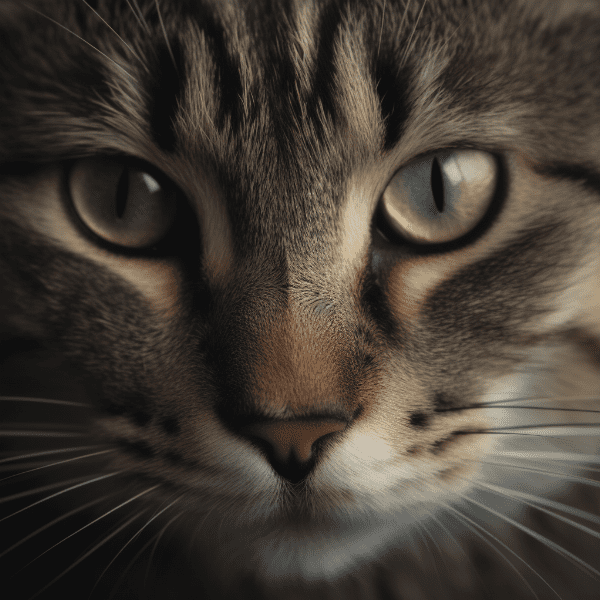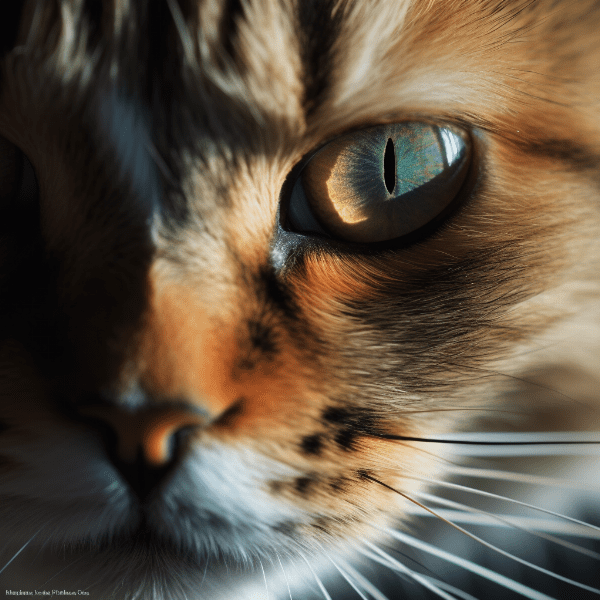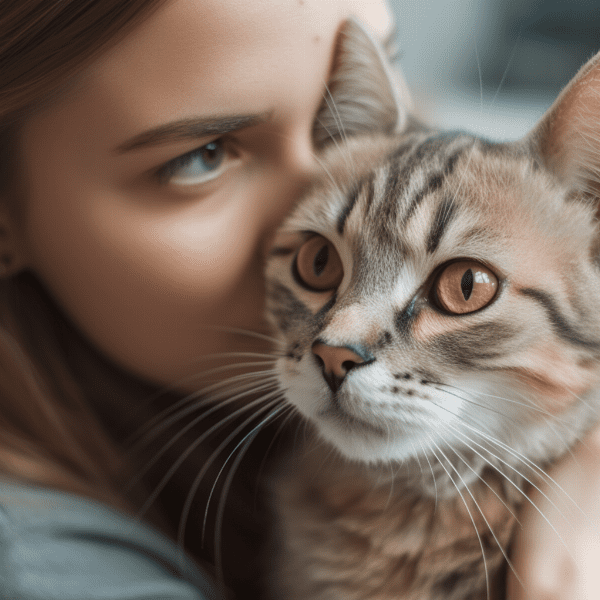Table of Contents
- What is Feline Blepharitis?
- Causes of Feline Blepharitis
- Symptoms of Feline Blepharitis in Cats
- Diagnosis of Feline Blepharitis
- Treatment Options for Feline Blepharitis
- Prevention of Feline Blepharitis
- Potential Complications of Feline Blepharitis
- Living with a Cat with Feline Blepharitis
- When to See a Vet for Feline Blepharitis
- Final Thoughts on Feline Blepharitis
What is Feline Blepharitis?
Feline blepharitis is a condition that affects the eyelids of cats. It is characterized by inflammation and irritation of the eyelid margins, which can cause discomfort and pain for your furry friend. This condition can occur in cats of all ages and breeds, but it is more common in older cats.
The Anatomy of a Cat’s Eye
To understand feline blepharitis, it is essential to know the anatomy of a cat’s eye. A cat’s eye consists of various structures that work together to allow them to see. The eyelids are a crucial part of this system as they protect the eyes from damage, debris, and foreign objects.
What Causes Feline Blepharitis?
Feline blepharitis can have various causes, including bacterial infections, allergies, and autoimmune diseases. Sometimes, it can also be a secondary symptom of an underlying medical condition, such as feline herpes virus. Other factors that can contribute to the development of feline blepharitis include poor nutrition, stress, and a weakened immune system.
Signs and Symptoms of Feline Blepharitis
The signs and symptoms of feline blepharitis can vary from mild to severe. Some of the most common symptoms include redness and swelling of the eyelids, crusty discharge, excessive tearing, and sensitivity to light. Your cat may also be rubbing their eyes frequently, pawing at their face, and showing signs of discomfort or pain.
How is Feline Blepharitis Diagnosed?
If you suspect that your cat may have feline blepharitis, you should schedule an appointment with your veterinarian. During the examination, your vet will examine your cat’s eyes and eyelids, checking for signs of inflammation, irritation, and infection. They may also perform additional tests, such as a culture or biopsy, to rule out other conditions.
Conclusion
Feline blepharitis can be a challenging condition to manage, but with the right treatment and care, your cat can live a happy, healthy life. If you suspect that your cat may have this condition, it is essential to schedule an appointment with your veterinarian as soon as possible. Early diagnosis and treatment are key to preventing complications and reducing your cat’s discomfort.
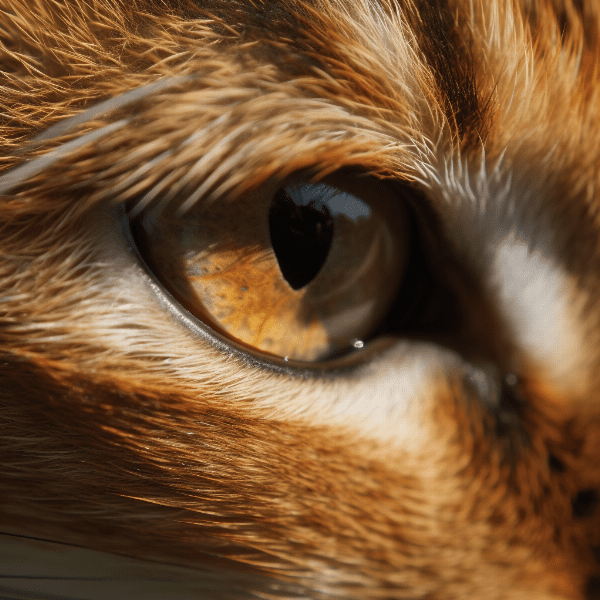
Causes of Feline Blepharitis
Feline blepharitis can have various underlying causes that can contribute to its development. Here are some of the most common causes:
Bacterial Infections
Bacterial infections are a common cause of feline blepharitis. The bacteria can enter the eye area through small cuts or injuries on the eyelids. The bacteria can cause inflammation and irritation, leading to the development of feline blepharitis.
Allergies
Allergies can also trigger feline blepharitis. Your cat may be allergic to a specific type of food, pollen, or environmental factor that can cause an allergic reaction. The allergic reaction can cause inflammation and irritation of the eyelids, leading to feline blepharitis.
Autoimmune Diseases
Autoimmune diseases, such as pemphigus foliaceus, can cause feline blepharitis. These diseases occur when the immune system mistakenly attacks healthy cells, causing inflammation and irritation of the eyelids.
Feline Herpes Virus
Feline herpes virus can cause feline blepharitis as a secondary symptom. This virus is highly contagious and can cause a wide range of symptoms, including sneezing, coughing, fever, and eye discharge. The virus can weaken the immune system, making your cat more susceptible to developing feline blepharitis.
Poor Nutrition
Poor nutrition can also contribute to the development of feline blepharitis. A diet lacking essential nutrients can weaken the immune system, making your cat more susceptible to infections and diseases.
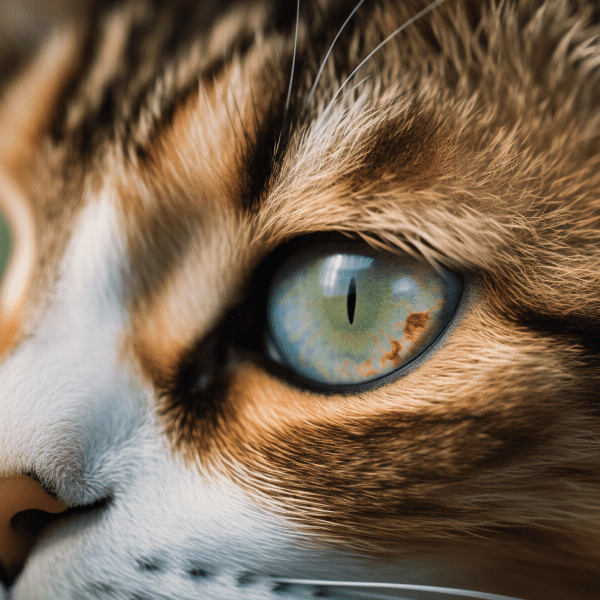
Symptoms of Feline Blepharitis in Cats
Feline blepharitis can cause a range of uncomfortable and painful symptoms for your furry friend. Here are some of the most common symptoms of feline blepharitis:
Redness and Swelling of the Eyelids
One of the most noticeable symptoms of feline blepharitis is redness and swelling of the eyelids. The inflammation can make the eyelids look puffy and swollen.
Crusty Discharge
Feline blepharitis can cause a yellowish or greenish crusty discharge around the eyes. The discharge may be more noticeable in the morning, after your cat has been sleeping.
Rubbing Eyes Frequently
Your cat may rub their eyes frequently if they have feline blepharitis. The rubbing can cause further irritation and inflammation of the eyelids.
Pawing at the Face
Some cats may paw at their face or eyes if they have feline blepharitis. This behavior can indicate that your cat is in pain or discomfort.
Discomfort or Pain
Feline blepharitis can cause discomfort or pain for your cat. They may show signs of lethargy or have a decreased appetite due to the discomfort.
Conclusion
Feline blepharitis can cause a range of uncomfortable symptoms for your cat. If you notice any of these symptoms, it is important to seek veterinary care. Your vet can diagnose the condition and develop a tailored treatment plan to manage the symptoms and prevent further complications. Early diagnosis and treatment are essential for a good outcome.
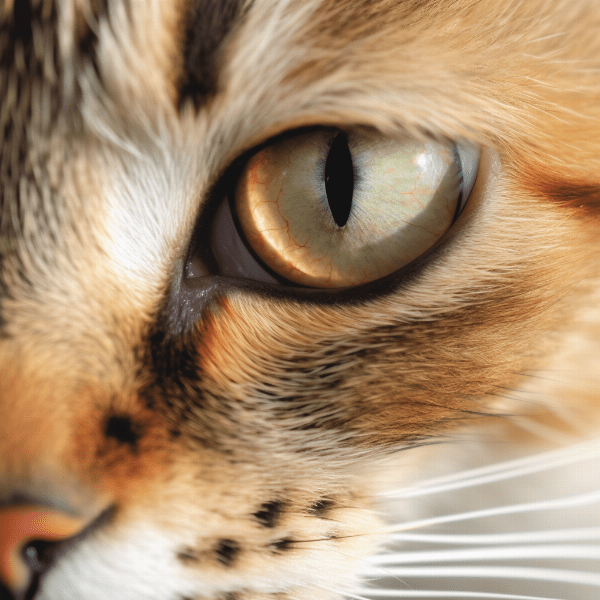
Diagnosis of Feline Blepharitis
If you suspect that your cat may have feline blepharitis, you should schedule an appointment with your veterinarian. Your vet will perform a thorough physical examination and may recommend additional tests to diagnose the condition.
Physical Examination
During the physical examination, your vet will examine your cat’s eyes and eyelids for signs of inflammation, irritation, and infection. They may also check your cat’s overall health to determine if there are any underlying medical conditions that could be contributing to the development of feline blepharitis.
Diagnostic Tests
Your vet may recommend additional tests to diagnose feline blepharitis. These tests may include:
Cultures
Your vet may take a swab of the discharge around your cat’s eyes to test for bacterial or fungal infections.
Biopsy
In some cases, your vet may recommend a biopsy of the eyelid tissue to diagnose feline blepharitis. A biopsy involves taking a small sample of tissue from the eyelid and examining it under a microscope.
Allergy Testing
If your vet suspects that allergies may be causing feline blepharitis, they may recommend allergy testing to identify the allergen.
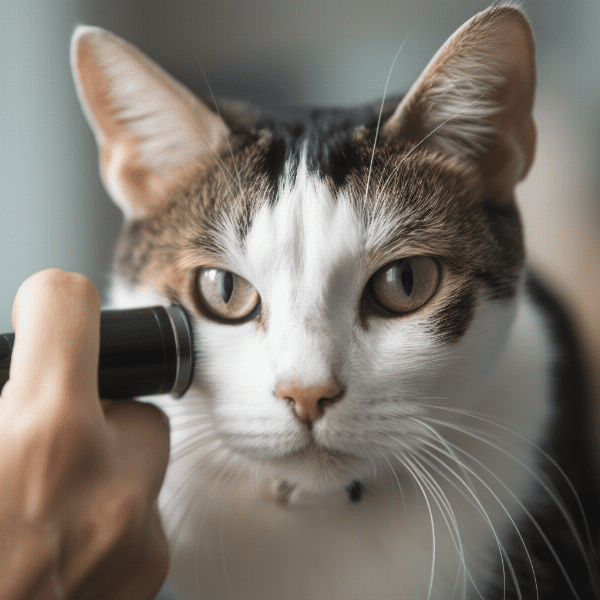
Treatment Options for Feline Blepharitis
There are various treatment options available to manage the symptoms of feline blepharitis. The treatment plan will depend on the underlying cause of the condition and the severity of the symptoms.
Topical Medications
Topical medications, such as antibiotics or corticosteroids, may be prescribed to manage the symptoms of feline blepharitis. These medications are typically applied directly to the affected area and can help reduce inflammation and irritation.
Oral Medications
In some cases, your vet may prescribe oral medications, such as antibiotics or antiviral drugs, to treat the underlying cause of feline blepharitis. These medications can help manage bacterial or viral infections and reduce inflammation.
Warm Compresses
Warm compresses can help reduce inflammation and loosen any crusty discharge around your cat’s eyes. You can use a warm, damp washcloth to gently apply heat to the affected area.
Eye Drops
Your vet may prescribe eye drops to help manage the symptoms of feline blepharitis. Eye drops can help reduce inflammation, soothe irritation, and promote healing.
Nutritional Supplements
Nutritional supplements, such as omega-3 fatty acids, can help improve the overall health of your cat’s skin and coat. These supplements can help strengthen the immune system and reduce inflammation, which can help manage the symptoms of feline blepharitis.
Conclusion
Feline blepharitis can be a challenging condition to manage, but with the right treatment plan, your cat can live a comfortable, happy life. If you suspect that your cat may have feline blepharitis, it is important to seek veterinary care as soon as possible. Your vet can diagnose the condition and develop a tailored treatment plan to manage the symptoms and prevent further complications.
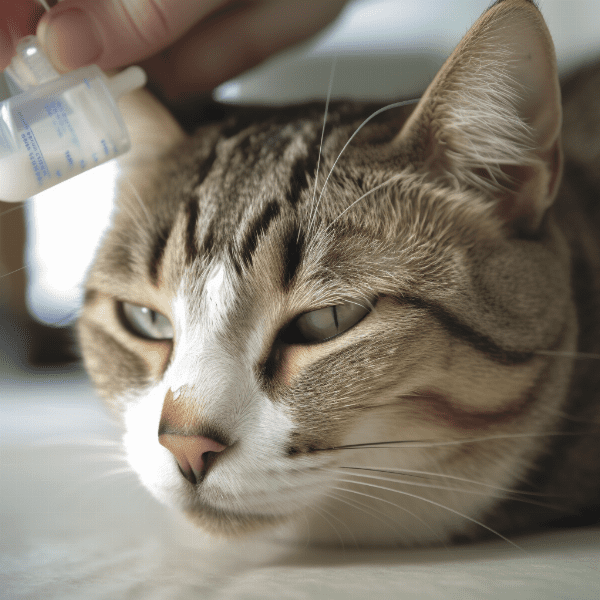
Prevention of Feline Blepharitis
While feline blepharitis can be a challenging condition to manage, there are steps you can take to prevent its development.
Regular Eye Exams
Regular eye exams are essential to maintaining your cat’s eye health. During the exam, your vet can check for signs of inflammation, irritation, and infection, and catch any potential issues early on.
Healthy Diet
Feeding your cat a healthy, balanced diet can help strengthen their immune system and prevent infections and diseases. Ensure that your cat’s diet includes essential nutrients, such as vitamins A, E, and C, and omega-3 fatty acids.
Reduce Stress
Stress can weaken your cat’s immune system and make them more susceptible to infections and diseases. Providing a stress-free environment for your cat, with plenty of opportunities for play and relaxation, can help prevent the development of feline blepharitis.
Conclusion
Preventing the development of feline blepharitis is possible with the right care and attention. Regular eye exams, good hygiene, a healthy diet, and stress reduction can help keep your cat’s eyes healthy and prevent the development of feline blepharitis. If you have any concerns about your cat’s eye health, it is important to seek veterinary care as soon as possible.

Potential Complications of Feline Blepharitis
Feline blepharitis can lead to a range of complications if left untreated or poorly managed. Here are some of the potential complications:
Corneal Ulcers
Feline blepharitis can cause corneal ulcers, which are open sores on the surface of the eye. Corneal ulcers can be painful and may cause vision loss if left untreated.
Chronic Conjunctivitis
Feline blepharitis can also lead to chronic conjunctivitis, which is inflammation of the conjunctiva, the tissue that lines the inside of the eyelids and covers the whites of the eyes. Chronic conjunctivitis can cause discomfort and may lead to scarring of the conjunctiva.
Secondary Infections
Feline blepharitis can weaken the immune system and make your cat more susceptible to secondary infections, such as bacterial or fungal infections.
Vision Loss
If left untreated, feline blepharitis can cause vision loss in severe cases. This can occur due to corneal ulcers, chronic inflammation, or scarring of the eye tissues.
Conclusion
Feline blepharitis can lead to a range of complications if left untreated or poorly managed. If you suspect that your cat may have feline blepharitis, it is important to seek veterinary care as soon as possible. Early diagnosis and treatment are essential for preventing further complications and reducing your cat’s discomfort.

Living with a Cat with Feline Blepharitis
Living with a cat with feline blepharitis can be challenging, but with the right care and attention, your cat can still live a happy, comfortable life.
Veterinary Care
Regular veterinary care is crucial for managing feline blepharitis. Your vet can monitor the condition, adjust the treatment plan as needed, and catch any potential issues early on.
Medication Administration
Administering medications to your cat as prescribed by your vet is essential for managing feline blepharitis. Be sure to follow the instructions carefully and keep track of any side effects or changes in your cat’s behavior.
Eye Cleaning
Regularly cleaning your cat’s eyes can help manage the symptoms of feline blepharitis. Use a damp washcloth to gently clean your cat’s eyes and face, being careful not to irritate the skin.
Stress Reduction
Stress can worsen the symptoms of feline blepharitis, so providing a stress-free environment for your cat is important. This can include providing plenty of opportunities for play and relaxation and minimizing changes to your cat’s routine.
Conclusion
Living with a cat with feline blepharitis can be challenging, but with the right care and attention, your cat can still live a happy, comfortable life. Regular veterinary care, medication administration, eye cleaning, and stress reduction are all important aspects of managing feline blepharitis. If you have any concerns about your cat’s eye health or the management of feline blepharitis, be sure to consult with your veterinarian.
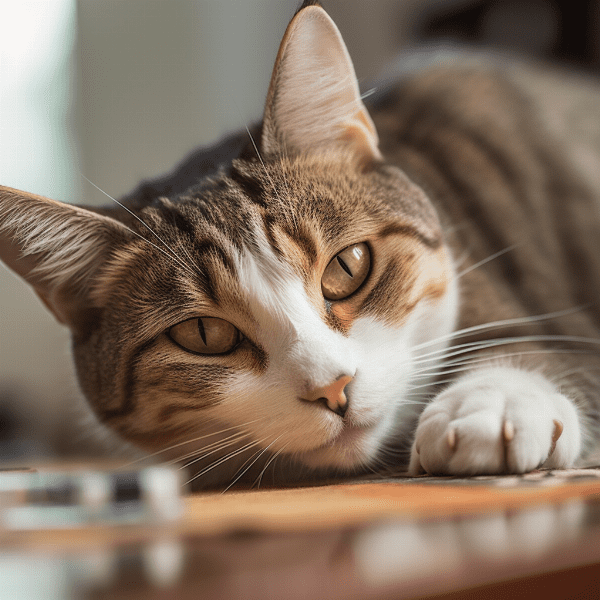
When to See a Vet for Feline Blepharitis
If you notice any symptoms of feline blepharitis in your cat, it is important to seek veterinary care as soon as possible. Here are some specific signs that may indicate it’s time to see a vet for feline blepharitis:
Discharge from the Eyes
If you notice a yellowish or greenish discharge around your cat’s eyes, it may be a sign of feline blepharitis. Discharge can indicate inflammation and infection of the eyelids.
Excessive Tearing
If your cat’s eyes appear excessively teary or watery, it may be a sign of feline blepharitis. Excessive tearing can indicate inflammation and infection of the eyelids.
Rubbing or Pawing at the Eyes
If your cat is frequently rubbing or pawing at their eyes, it may be a sign of discomfort or pain associated with feline blepharitis.
Sensitivity to Light
If your cat is squinting or closing their eyes when exposed to bright light, it may be a sign of feline blepharitis.
Conclusion
If you notice any of these signs of feline blepharitis in your cat, it is important to seek veterinary care as soon as possible. Early diagnosis and treatment are essential for managing the condition and preventing further complications. Your vet can diagnose the condition and develop a tailored treatment plan to manage the symptoms and prevent further complications.
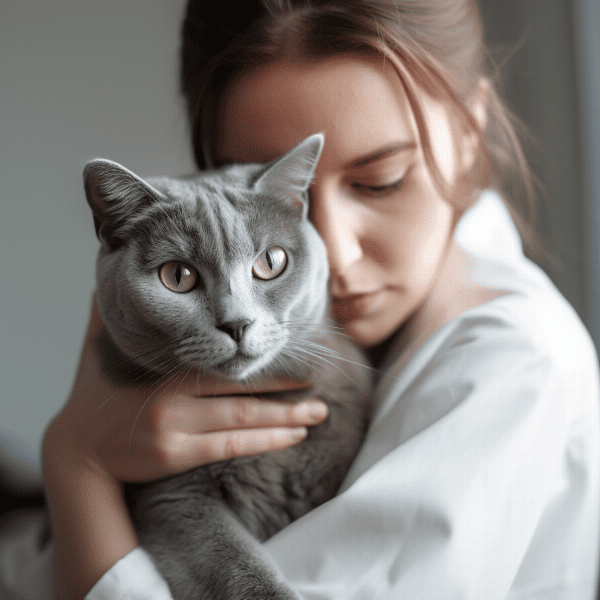
Final Thoughts on Feline Blepharitis
Feline blepharitis is a condition that can cause discomfort and pain in your cat’s eyes. It can also lead to a range of complications if left untreated or poorly managed. However, with the right care and attention, your cat can still live a happy, comfortable life.
It is important to seek veterinary care as soon as possible if you suspect that your cat may have feline blepharitis. Early diagnosis and treatment can help prevent further complications and reduce your cat’s discomfort.
Regular veterinary care, medication administration, eye cleaning, and stress reduction are all important aspects of managing feline blepharitis. Additionally, preventing the development of feline blepharitis is possible with good hygiene, regular eye exams, a healthy diet, and stress reduction.
If you have any concerns about your cat’s eye health or the management of feline blepharitis, be sure to consult with your veterinarian. With the right care and attention, you can help manage the symptoms of feline blepharitis and keep your cat’s eyes healthy and happy.


